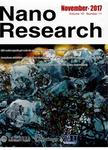High-performance oxygen reduction and evolution carbon catalysis: From mechanistic studies to device integration
High-performance oxygen reduction and evolution carbon catalysis: From mechanistic studies to device integration作者机构:Department of Chemical Engineering Stan ford University Stanford CA 94305 USA Institute of Chemical and Engineering Sciences Agency for Science Technology and Research Jurong Island 627833 Singapore Stanford Nano Shared Facilities Stanford University Stanford CA 94305 USA Department of Physics Ulsan National Institute of Science and Technology (UNIST) Ulsan 689-798 Republic of Korea Department of Chemical and Biological Engineering Colorado School of Mines Golden CO 80401 USA UNIST Central Research Facilities (UCRF) Ulsan National Institute of Science and Technology (UNIST) Ulsan 689-798 Republic of Korea SUNCAT Center for Interface Science and Catalysis SLAC National Accelerator Laboratory 2575 Sand Hill Road Menlo Park CA 94025 USA Institute of Catalysis Research and Technology Karlsruhe Institute of Technology Hermann-von-Helmholtz Platz 1 76344 Eggenstein-Leopoldshafen Germany Institute for Chemical Technology and Polymer Chemistry Karlsruhe Institute of Technology Engesserstr. 18 76131 Karlsruhe Germany
出 版 物:《Nano Research》 (纳米研究(英文版))
年 卷 期:2017年第10卷第4期
页 面:1163-1177页
核心收录:
学科分类:0808[工学-电气工程] 0809[工学-电子科学与技术(可授工学、理学学位)] 07[理学] 0805[工学-材料科学与工程(可授工学、理学学位)] 0702[理学-物理学]
基 金:supported by the U.S. Department of Energy, Office of Science, and Office of Basic Energy Sciences support from the U.S. Department of Energy, Office of Sciences, Office of Basic Energy Sciences, to the SUNCAT Center for Interface Science and Catalysis funding from Agency of Science, Technology, and Research (A*STAR), Singapore support from the Croucher Foundation support from the Future-Innovative Research Fund of Ulsan National Institute of Science & Technology (UNIST)
主 题:electrocatalysis porous carbon density functional theory
摘 要:The development of high-performance and low-cost oxygen reduction and evolution catalysts that can be easily integrated into existing devices is crucial for the wide deployment of energy storage systems that utilize O2-H2O chemistries, such as regenerative fuel cells and metal-air batteries. Herein, we report an NHB-activated N-doped hierarchical carbon (NHC) catalyst synthesized via a scalable route, and demonstrate its device integration. The NHC catalyst exhibited good performance for both the oxygen reduction reaction (ORR) and the oxygen evolution reaction (OER), as demonstrated by means of electrochemical studies and evaluation when integrated into the oxygen electrode of a regenerative fuel cell. The activities observed for both the ORR and the OER were comparable to those achieved by state-of-the-art Pt and Ir catalysts in alkaline environments. We have further identified the critical role of carbon defects as active sites for electrochemical activity through density functional theory calculations and high-resolution TEM visualization. This work highlights the potential of NHC to replace commercial precious metals in regenerative fuel cells and possibly metal-air batteries for cost-effective storage of intermittent renewable energy.



